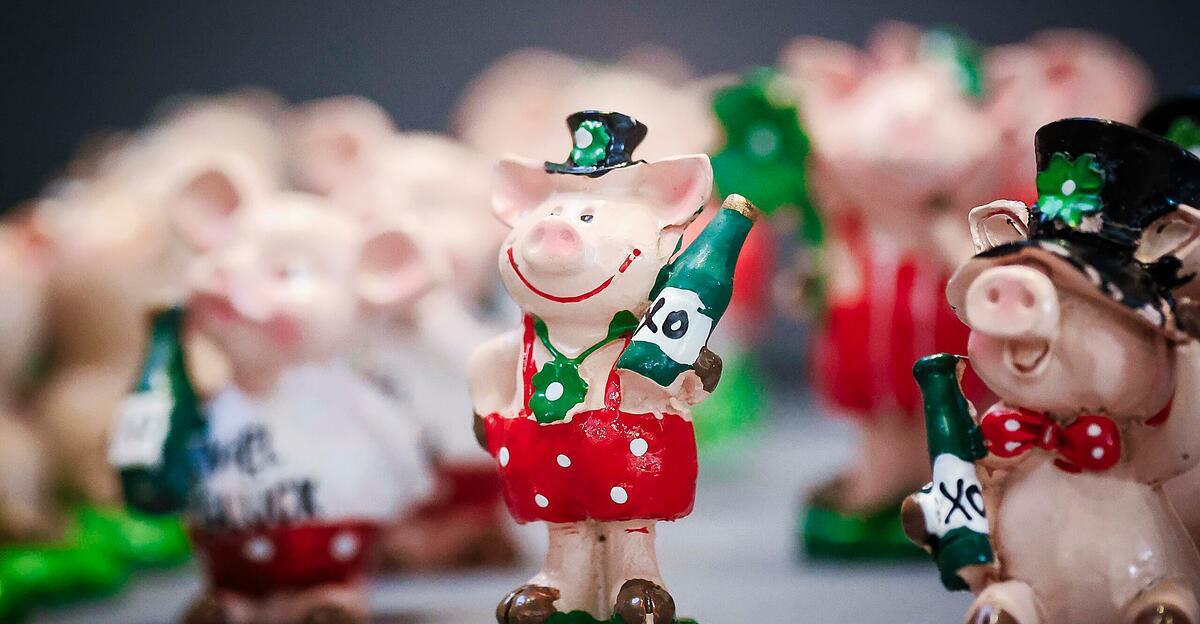Even if the custom is relatively unknown in other countries, giving away lucky charms on New Year’s Eve is already a tradition here.
Each lucky charm motif has a certain meaning that has developed from ancient customs:
The lucky clover: Since four-leaf clover is very rare in nature, it takes a lot of luck to find one. Taken with you when traveling, the cloverleaf protects the traveler; if you sew it into your clothing, it is said to protect you from evil.
The chimney sweep in turn, should guarantee a functional fireplace. In the past, it was a disaster if the chimney was blocked because then the food could no longer be prepared and the house became cold. In such a situation, the chimney sweep brought salvation – i.e. brought back happiness.
The lucky pig is a sign of prosperity and wealth. In addition, the Romans considered those who had many pigs and therefore enough to eat to be privileged.
The lucky guy is said to have a healing effect just like the ladybug. The latter is also considered a messenger from heaven and is therefore supposed to protect the children.
The lucky penny represents wealth. Anyone who gives it as a gift wishes the recipient never to run out of money. Historical background: The lucky penny is often seen as a smaller version of the baptismal coin, which in earlier centuries was nailed to the stable door or carried along in the hope of driving away witches.
The Horseshoe: Since the horse has always been a symbol of strength and power, the horseshoe that protected the animal was also considered a good luck charm. There are several versions of the orientation of the horseshoe; on the one hand, an iron open at the top is considered a symbol of the devil’s horns, and on the other hand, it is also a fountain that catches luck. However, when opened downwards, there is the idea that happiness can “fall out”.




